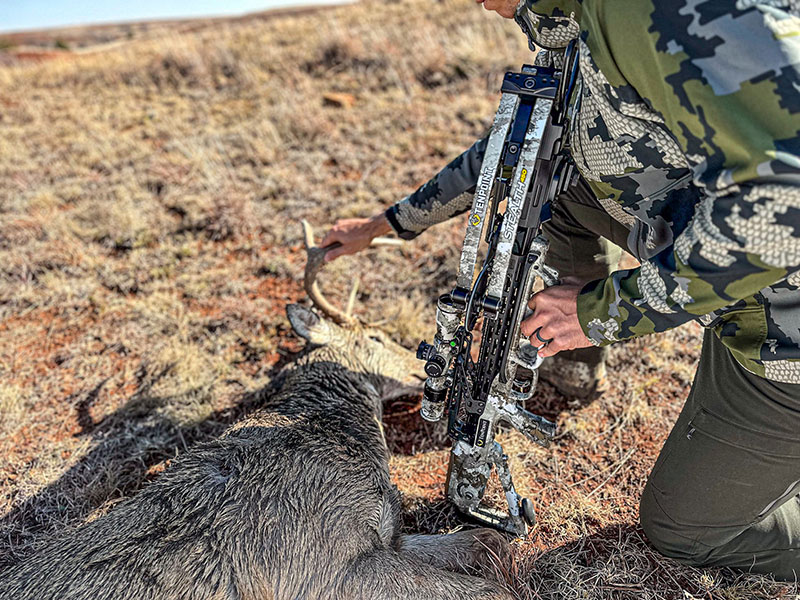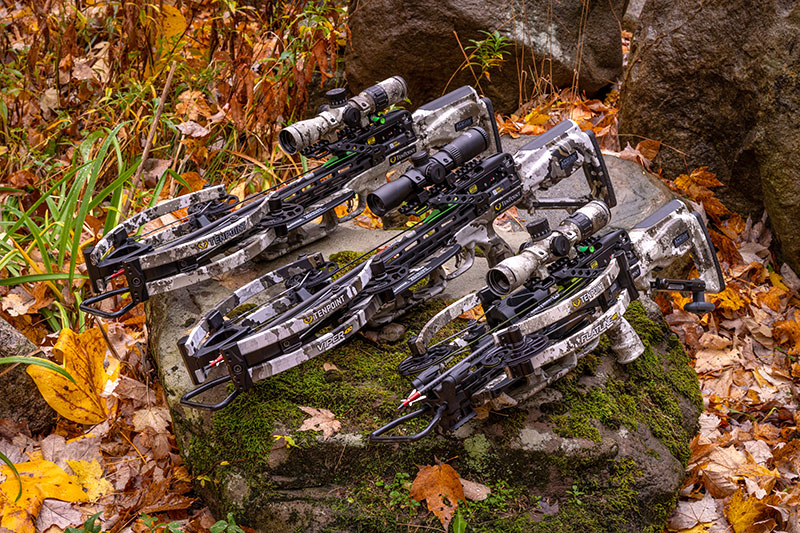
When I attended the Archery Trade Association show in Louisville, KY several years ago, the number of crossbow companies that were present blew me away. I had been dedicated to archery hunting for more than 40 years. The thought of something threatening that was unnerving.
As time has passed, I have studied the advancement of crossbow technology and the skill to use it ethically. I have learned to accept it as a viable alternative to the “vertical” bow I have grown accustomed to and used my entire life to this point.
This led me to several observations.
First, the crossbow is more ancient than the recurve, or compound bow by a long way. The first crossbow known dates back to the 4th century BC in Shandong, China. Conversely, the compound bow was invented in 1966.
In a matter of terms, the crossbow comes in three styles: the recurve limb, forward draw compound limbs and reverse draw compound limbs. All three of these are effective, accurate and relatively easy to use. The forward compound limbs are the most popular, but the reverse draw is gaining rapidly in popularity.
The projectile of the crossbow is referred to as either a bolt or arrow depending on its use. Plainly, arrows are used for animals, and bolts for people during war.
As such, a weapon that fires an arrow should, by all means, be used during archery seasons. The limitations are similar, the projectile is the same (only shorter with a stronger spine) and the killing end is identical to that of a vertical bow.
Why are crossbows so popular? I posed this question to Brian Flaherty, assistant manager of marketing for TenPoint, Horton, and Wicked Ridge crossbow companies.
Flaherty said simply and unashamedly, “The crossbow gets more people into the woods who otherwise would not be able to go.”
Once relegated for elderly or physically impaired hunters, the crossbow now enables more people to enjoy the thrill of the hunt.
Youth and small-framed hunters as well as those with limiting abilities are all choosing to use the crossbow as a method of hunting and spending time afield.
Flaherty went on to add, “You buy one of my TenPoint crossbows, spend a few hours getting used to it, zero in the optics, and you are ready to hunt.”
With more and more hunters living in the suburbs, finding a place to practice archery is difficult. The crossbow allows these people to spend time afield.
 The National Deer Association (NDA) is using crossbows for their Field to Fork program where they are introducing adults to hunting and choosing to use a crossbow for several reasons.
The National Deer Association (NDA) is using crossbows for their Field to Fork program where they are introducing adults to hunting and choosing to use a crossbow for several reasons.
Lindsay Thomas, the Director of Communications at the NDA said, “The crossbow is a great introductory weapon for new hunters. The lack of recoil and loud report helps new hunters enjoy the hunt more.”
Lastly, why is the crossbow so popular? The crossbow allows hunters to spend more time afield doing what they love and doing it ethically and humanely.
Where does that leave me? I learned a long time ago that the 3-Rs – Recruitment, Retention and Reactivation – are the main reasons for hunter numbers to decline. That said, my position is simple, if it is legal in your state, country or province and you want to do it, go and do it. Enjoy your time afield.
If you are one of those who shame crossbow hunters, take a step back and ask yourself this question: If it gets more people to enjoy the sport I care so much about, why am I against it? You will probably be a lot more supportive of those who choose it as their weapon of choice.
Sight it in:
Once a crossbow is sighted in and the hunter is familiar with shooting it, they’re ready to hunt. This cuts down on a lot of prep work necessary with conventional bows, and allows the hunter to enjoy the hunt.
The post “In defense of the crossbow” first appeared on CarolinaSportsman.com.

